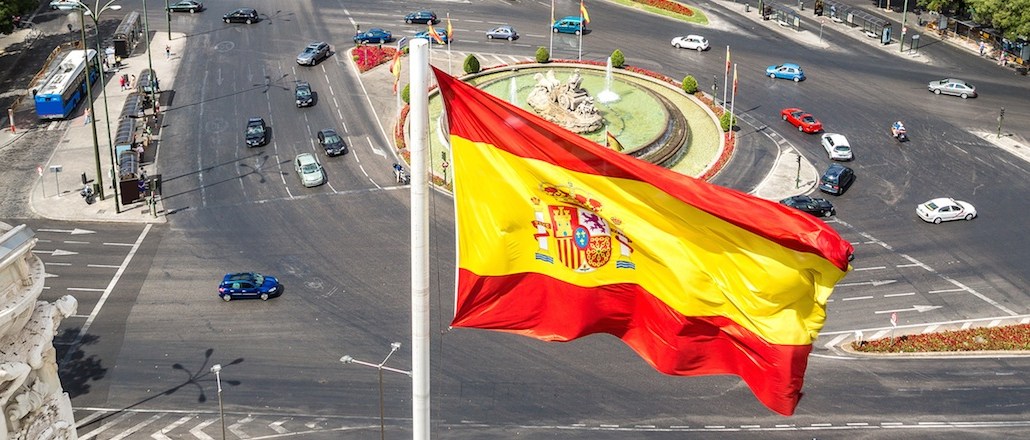
This is Global Creative, a series by Digiday that highlights the nuances of advertising scenes in different parts of the world, through the eyes of an established creative from there.
With its unemployment rate at a worrying 20.5 percent in January 2016, Spain is still reeling from the debilitating long-term effects of the 2008 economic crisis. And while that may have dimmed its creativity, it hasn’t put it out.
“During the last three years, creativity has started to wake up again,” said Pedro Soler, executive creative director at FCB Spain. “The recession took us to a state of survival.”
That according to Soler can be attributed to Spanish resilience and how the nation approaches both life and work. No matter what the circumstances, the old Spanish tourism tagline “Everything under the sun” still holds true, and people still have smiles on their faces.
Here’s a deeper look at the nuances of Spanish advertising, according to Soler.
Creativity is in Spanish blood.
Whether it’s Barcelona’s bustling art scene and design sensibility or Madrid’s eclectic energy, Spain has several vibrant sources to derive creative inspiration from. Perhaps that is why, according to Soler, the country has been making its mark in advertising festivals like Cannes since the ‘80s.
In the last five years, Spain has consistently featured in the top 15 countries in the prestigious competition and was in the seventh position in 2015. It even has its own festival aimed at promoting advertising creativity called “El Sol,” which is held annually toward the end of May in Bilbao in Spain, organized by the Spanish Association of Advertising Agencies.
Creative that resonates is either funny or rooted in insights.
“Good Spanish creativity is open, fresh and close to the people,” said Soler. He added that while Spanish creativity couldn’t be crystallized in one characteristic feature, creative that has traditionally done well is either grounded in deep insights or is funny — often in a self-deprecating way. “We play in many different styles, and we are not afraid to laugh at ourselves.”
Take this campaign for Aquarius, an isotonic drink by the Coca-Cola Company. While the product targets people who play sports, this work aimed to take it to everyone. It humorously played up some pesky features of summer — like heat waves, jellyfish, mosquitoes and tight bathing suits — and suggested that anything could become a fun adventure with the drink.
Spain has a healthy rivalry with ad-creative powerhouses in Latin America.
For Soler, the fate of Spanish advertising in the future will be more and more interlinked with that of other Latin American countries, particularly Argentina and Brazil. In fact, the three already have a “healthy rivalry” when it comes to competing for the top honors in three of the biggest festivals for Latin countries: El Ojo de Iberoamerica in Buenos Aires, El Sol in Bilbao, Spain and Fiap, to be held this year in Panama. There is also a considerable talent exchange between the countries.
“We have to understand the increasing role we’ll be playing in South America and vice versa, as clients grow their businesses there and form alliances with agencies there,” he said. “Just thinking about the fact that the United States is the country with the second-biggest Spanish-speaking population gives an idea about how Spanish communication is going to expand and the role Spain will have in this growth.”
Soler also acknowledged how Spanish creative has been influenced by the “Argentinian style” of street humor, such as in the following campaign for Libero Magazine, which focuses on these countries’ mutual love for soccer. It drives home the message that Líbero is not just a soccer magazine but also one that uses the world’s most popular sport to talk about other topics such as culture, art and style.
New formats are broadening the narrative.
Clients such as telecommunications giant Telefónica Movistar, banks such as BBVA and Santander and departmental stores like El Corte Inglés are growing or considering growing their presence in South America; therefore, creative has broken out of the traditional mold. “The digital communication possibilities help us to construct pieces that break with traditional formats,” Soler said. “And in Spain, people are starting to create great campaigns that work digitally.”
For example, this short 12-minute film directed by Alejandro Amenába and starring Dakota Johnson is by beer brand Estrella Damm.
Another one is this charming and festive animated video by the Spanish Lottery in December 2015, which features a lonely security guard who works in a mannequin factory and garnered over 1.1 million views on YouTube.
Homepage image via Shutterstock.
More in Marketing

Pitch deck: How Amazon is recasting Twitch as a core part of its CTV pitch
Amazon is positioning Twitch as a defining asset in its CTV ambitions.

Netflix transforms former mall department stores into experiential venues
The location in Dallas opens this week, and one at the King of Prussia mall near Philadelphia opened last month.

Future of Marketing Briefing: AI has created a new talent paradox in programmatic agencies
The job isn’t execution anymore. AI handles that. The job is judgement.





